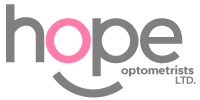
How stress can affect vision
March 3, 2021
How can sunglasses protect your eyes?
March 10, 2021
How stress can affect vision
March 3, 2021
How can sunglasses protect your eyes?
March 10, 2021
As a parent, you want to get your child off to a good start in life and eyesight forms such an important part of growth and development. However, when is the right time to start having your child’s eyes checked?
It’s essential not to postpone eye exams for young infants and children because some early eye problems can affect vision for life. Discovering a potential problem earlier can keep a minor problem from becoming something significant, which may become harder to treat later.
Eye exams are not only a way to know if your child is seeing clearly or requires visual correction, but also just like regular checks up with a pediatrician, eye examinations are about preventive care.
At what age should my child have their eyes examined?
A comprehensive eye examination should take place if possible, by the age of one, and should be repeated before pre-school in children without any obvious eye problems. Pediatricians do perform limited eye examinations right after birth and in the first few years of life.
Eye examinations become much more important in children who:
- Have a sibling or a parent with a major eye condition, such as crossed or turned eye(s) (strabismus) or lazy eye (amblyopia).
- If you suspect your child has a visual problem.
Sometimes there may be no apparent symptoms. However, your child may still have a problem with his/her vision. Undiagnosed conditions or abnormalities can lead to vision loss. However, it’s possible to reverse some problems if detected early. A classic example is a lazy eye. Children with this condition have one eye that is weaker than the other. and generally respond well to early treatment.
This may include an eye patch; eye drops or spectacles. Another example is crossed eyes, which involves one or both eyes turning inward or outward. This can require special eyewear or an eye patch.
How do you know if there is a problem ?
Following these tips will help you protect your child’s vision and promote healthy eyesight for life.
-
- Don’t wait until your child starts school
If you have questions about your young child’s vision, do not hesitate to schedule an eye examination with a certified eye care professional. Most children have their vision tested before they start pre-school — however, its ideal to have your child’s eyes tested before then.
- Don’t wait until your child starts school
-
- Consider your family history
While it’s best for all children to have their eyes checked, it’s even more important if there is a family history of vision problems. As with many other health-related conditions, your child is more likely to have vision problems if they run in your family. So, it’s best to start monitoring it early on.
- Consider your family history
-
- Visit the right person
As you may have already visited a pediatrician (doctor specializes in treating children), both optometrists and ophthalmologists specialize in eye health and detecting early vision problems. Nowadays many eye care professionals use advanced digital technologies and child-friendly tools to create a fun, interactive exam. — this enables the doctor to pinpoint problems more easily, even if a child hasn’t learned how to talk or doesn’t know the alphabet.
- Visit the right person
-
- Trust your gut
Parents should always trust their instincts. After all, you know your child best. Parents are often the first ones to notice signs that something may be wrong. Your practitioner may not find a problem at first, but if you still have concerns, keep working together with them to pinpoint the problem. Discuss the signs you’re seeing, when and how often – this will go a long way to assist the optometrist or seek additional professional advise with a second opinion.
- Trust your gut
What things can you typically expect during the eye exam?
It is important to remember that going for your first eye exam can be considered very daunting, especially a child. Talking to your child beforehand about the examination and how it mostly involves looking at a screen and different things and can actually be quite fun goes a long way to putting a child’s mind at ease. This will make their first experience a positive one and assist the practitioner establish a good vision care relationship and provide you with accurate feedback.
A comprehensive eye examination generally involves, and is not limited to the following:
- How well the pupils respond to light.
- The ability to fixate on an object and follow it with the eyes.
- Checking the eye alignment to detect issues such as strabismus (squint).
- Eye dominance and checking a “lazy eye” (amblyopia).
- Focusing ability at different distances.
- How the eyes work together using filters, called binocular vision testing.
- Peripheral vision to see where a child notices an object entering the field of view.
- Vision testing for focus errors, using child friendly shapes or letters.
- Retinoscopy to measure how light travels into the eye.
- Detailed eye health and retina (back of eye) examination.

Images taken from Spectrum Eyecare software
